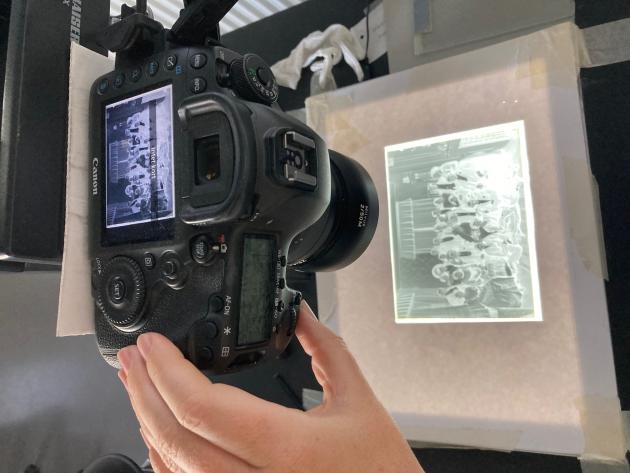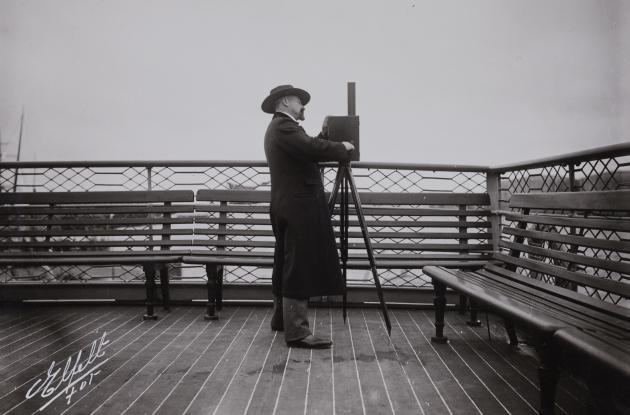How to digitise 200,000 photographs?
Get behind the digitisation of royal court photographer Peter Elfelt's photographs and learn more about our work processes when almost 100-year-old images go digital.
In 2020, Royal Danish Library started the digitisation of "Peter Elfelt's negative collection from 1890-1931". The negatives document the early development of the welfare society, industrialisation and urbanisation in Denmark.
The handling of the negatives in the Elfelt collection is extra resource-intensive as the material is fragile and the nitrate negatives require special safety measures as they are flammable.
Fragile glass and flammable negatives
A total of 200,000 negatives from the Elfelt collection must be digitised. So far, 170,000 have been digitised, so now the task is to digitise the remaining 30,000. The actual digitisation is the responsibility of project manager Martha Haarløv and her colleagues in the library's digitisation department.
“We digitise both nitrate negatives and glass plate negatives. The handling of the negatives in the Elfelt collection is extra resource-intensive, as the material is fragile, and the nitrate negatives require special safety measures, as they are flammable,” says Martha Haarløv.

Photo: Det Kgl. Bibliotek
A workflow with blue freezers
A special workflow has been prepared, where the digitisation department receives the negatives in blue freezers from the refrigerated storage facility, and when they have been acclimatised, they can be unpacked and put on shelves. Only then can the actual digitisation begin.
“We use a fixed photo stand with a Canon SLR camera mounted over a light table. On the light table the negative to be photographed is placed, then we record the negative. Once it has been recorded, we edit it in the software programme Capture One, where digital development and naming also take place,” explains Martha Haarløv.
Facts: The Elfelt project
Royal Danish Library owns the Peter Elfelt collection together with the Museum of Copenhagen, and both institutions are pleased to be able to digitise it. The photographs are free of copyright, so there will be free access to them when they are online.
The Elfelt project runs from 2019-2024. Getting the many images online is a comprehensive process that also requires preservation and metadata. It is a task that the preservation department, the digitisation department and special collections, which have the daily responsibility for the Elfelt collection, collaborate on.
Quality check and metadata
In the next step, all the new image files are quality checked. Later, the images are uploaded to one of the library's internal databases and descriptive metadata is added, and finally the many images are published on kb.dk.
The descriptive metadata comes from Peter Elfelt's own protocols, where information such as negative numbers, dates of record and the customer's name are written down in detail.
